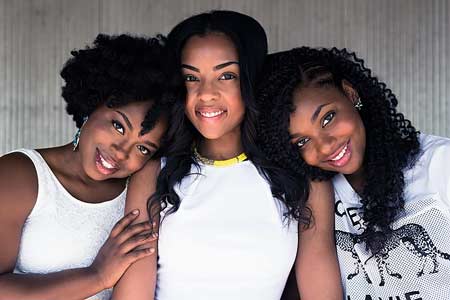(a) Understanding abilities

We acquired several bumble-bee (Bombus terrestris dalmatinus) colonies, for every single with which has 31forty workers, from Koppert Physiological Solutions (Berkel dentro de Rodenrijs, The netherlands). Every pros was in fact uniquely noted for the thorax which have designated, colored tags (Opalith tags; Christian Graze Kg, Germany). It enjoy men and women to become accurately understood in both research training experiments and you may field foraging examples.
This new bees were pre-taught to forage out-of 20 bicoloured, blue and red, phony plants during the a lab journey arena. The newest rectangular, bicoloured herbs had been manufactured from two halves (for each and every a dozen?24 mm): one to red (Perspex Yellow 260) additionally the almost every other blue (Perspex Bluish 727). Through the pre-training, the bicoloured plants were compensated which have fifty% (w/w) sucrose service delivering in earlier times the color-unsuspecting bees that have an equal chance to affiliate both colors which have reward (Raine ainsi que al. 2006b). Bees doing no less than five straight foraging bouts to your bicoloured plants had been chose for training. These types of foragers was taught truly, within the a flight arena who has 10 bluish (Perspex Bluish 727) and you will 10 red (Perspex Red 260) artificial vegetation (for every single 24?24 mm). Reddish plants was basically rewarding (each contains fifteen ?l out-of 50% (w/w) sucrose solution), when you’re blue vegetation were blank (unrewarding). Bees have been regarded as choosing a rose after they either reached (inspected) or got involved. Getting to the a rose did not necessarily lead to an eating (probing) skills. Therefore, ahead of probing a worthwhile (yellow) rose, bees you can expect to like both reddish/fulfilling or bluish/unrewarding vegetation from the handling otherwise landing to them (as opposed to probing). Going for a yellow (rewarding) flower are considered correct’, whenever you are choosing a blue (unrewarding) flower is actually deemed getting an error’. We recorded the possibility series created by for each bee on date it very first registered brand new airline arena. Recording the brand new flower choices for for each bee stopped immediately following they had generated 99 rose choices after the first-time it probed an excellent fulfilling (yellow) flower (Raine ainsi que al. 2006b). Therefore, for every single bee made at least 100 rose options, for instance the first-time it probed a rewarding rose, as well as any choice made before it first probing event.
Herbs had been changed as well as their positions re-randomized ranging from foraging bouts to avoid bees having fun with Poznan hot girl scent marks otherwise earlier rose positions because the predictors from reward. Flower colours was selected to ensure that bees had to defeat the good, unlearned taste to have blue, prior to associating certainly one of their innately minimum preferred colors (yellow) with reward (Chittka ainsi que al. 2004; Raine mais aussi al. 2006a). Ten bees have been taught from per nest (we.e. 180 bees as a whole) between 4 and you can . Thorax thickness dimensions was basically removed for each and every of them bees once the a measure of body size. Regulated lighting effects to have laboratory tests are provided by highest-volume neon bulbs (TMS 24F lights having 4.step 3 kHz ballasts (Philips, Holland) fitting that have Activa sunlight tubes (Osram, Germany)) to help you replicate natural daylight above the bee flicker mixing volume.
(b) Learning curves
The starting point for each bee’s learning curve was the proportion of errors made (blue flowers chosen) before the bee first probed a rewarding (yellow) flower. For bees making fewer than five flower choices (either by approaching or landing on them) before probing a rewarding flower (n=53), we used the colony mean proportion of errors (calculated from bees making five or more such choices). Flower choices made by each bee after (and including) the first time it probed a rewarding (yellow) flower were evaluated as the number of errors (blue flowers chosen) in each group of 10 choices. Learning curves (first-order exponential decay functions: y=y0+Ae ?x/t ) were fitted to these 11 data points (i.e. the start pointing and subsequent 10 groups of 10 flower choices) for each individual bee, using Microcal Origin (Chittka et al. 2004; Raine et al. 2006b), to capture the dynamic nature of the learning process. Here, x is the number of flower choices the bee made, starting with the first time it probed a yellow flower, and y is the number of errors. The saturation performance level (y0) is the number of errors made by a bee after finishing the learning process, i.e. when reaching a performance plateau. The decay constant (t) is a measure of learning speed: high values of t correspond to slow learning, whereas lower t values indicate faster learners. A is the curve amplitude: the maximum displacement (height) of the curve above y0. Both amplitude (A) and saturation performance (y0) were constrained between 0 and 10 for curve fitting. Eight (out of 180) bees showed no appreciable improvement in performance during the task, and the software generated learning curves’ that were essentially horizontal lines. These bees were excluded from subsequent analyses because their t values were either very high (>400) or negative.


